When MetLiveArts stages a performance in one of the galleries, the space is energized in a new way. We've said it before: the concerts you see here literally couldn't be experienced anywhere else, and the many spaces in the Museum are often what inspired the performance in the first place. There's a rich history of site-specific performance at The Met, and much has changed over the years—from the overall look of the space itself to the range of concerts offered. Here's a look back at some of the in-gallery performances, from the early 1920s through to the most recent season of MetLiveArts programming.
The Great Hall
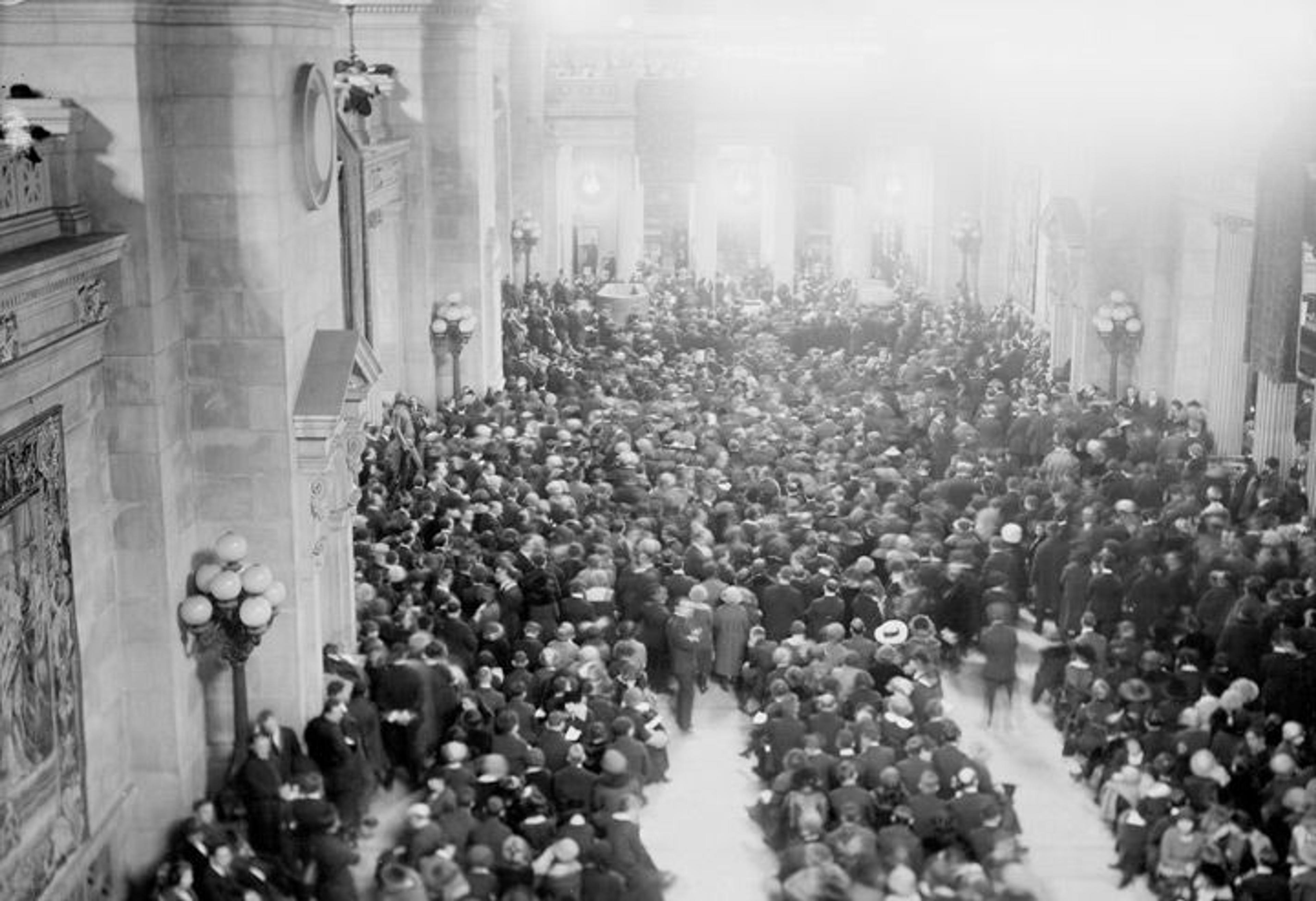
Saturday Free Concert Series with the Symphony Society of New York Orchestra, conducted by David Mannes, February 1922. Photo © The Metropolitan Museum of Art
When you enter The Met and navigate your way through the Great Hall, packed with visitors, tour groups, and the murmur of thousands of voices, it's hard to imagine a concert space. In fact, due to the architecture of the arched ceilings and the sheer size of the space, it is not exactly a natural performance venue, as the sound is hard to control. (Even ETHEL, the ensemble that performs at the Balcony Bar on weekends, admits there are some "acoustical tricks going on.") However, it is one of the most stunning and grand locations in which to stage a concert, which history proves.
The conductor and violinist David Mannes organized an incredibly popular concert series, which by 1919 featured eight free concerts a year. Seen in the photograph above is the sheer volume of people that packed themselves into the Great Hall—on stairs and benches, or even seated on the floor—just to be a part of the audience. Reportedly the average audience for these performances reached upwards of 15,000 people, and the orchestra, recruited by Mannes from the earlier iteration of what would become the New York Philharmonic, included 50 to 60 musicians performing classical repertoire.
With Mannes's retirement, Museum concerts (and a Members series) journeyed to other galleries like the Arms and Armor Court, and the large-scale concerts staged in the Great Hall went into hibernation. Recently, though, renowned musicians have again returned for concert experiences in the iconic space. In September 2013, John Zorn's Opening Antiphonal Fanfare for Six Trumpets made its world premiere in the Great Hall to begin the daylong celebration of Zorn at The Met.
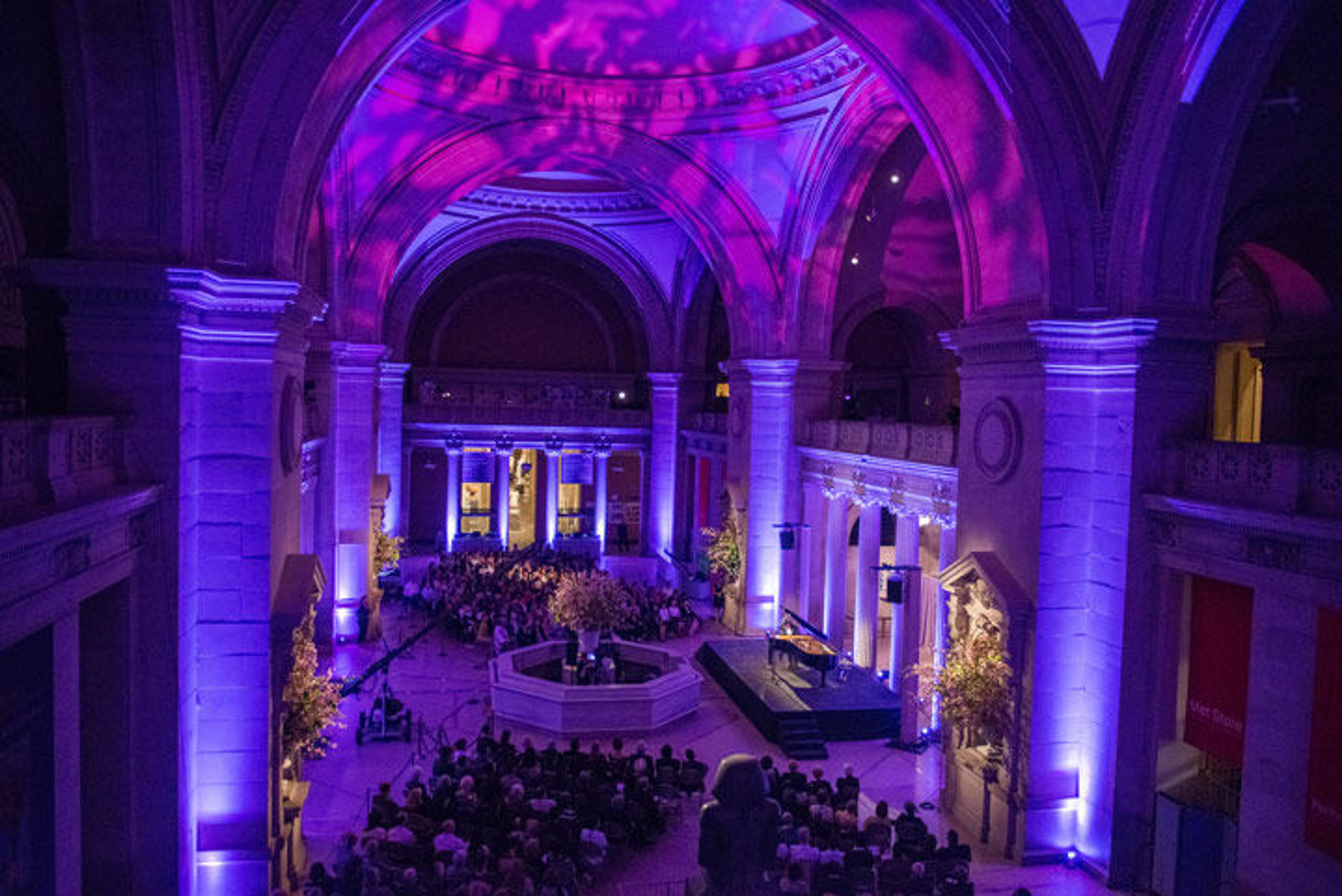
Lang Lang at The Met, May 2015. Photo by Stephanie Berger
The most recent performance reminiscent of the Mannes concerts—right down to the audiences being perched on the stairs—was Lang Lang at The Met in May 2015. The superstar pianist electrified the space with a program of Chopin and Tchaikovsky, as well as Wu Zuqiang and Du Mingxin.
The Emma and Georgina Bloomberg Arms and Armor Court
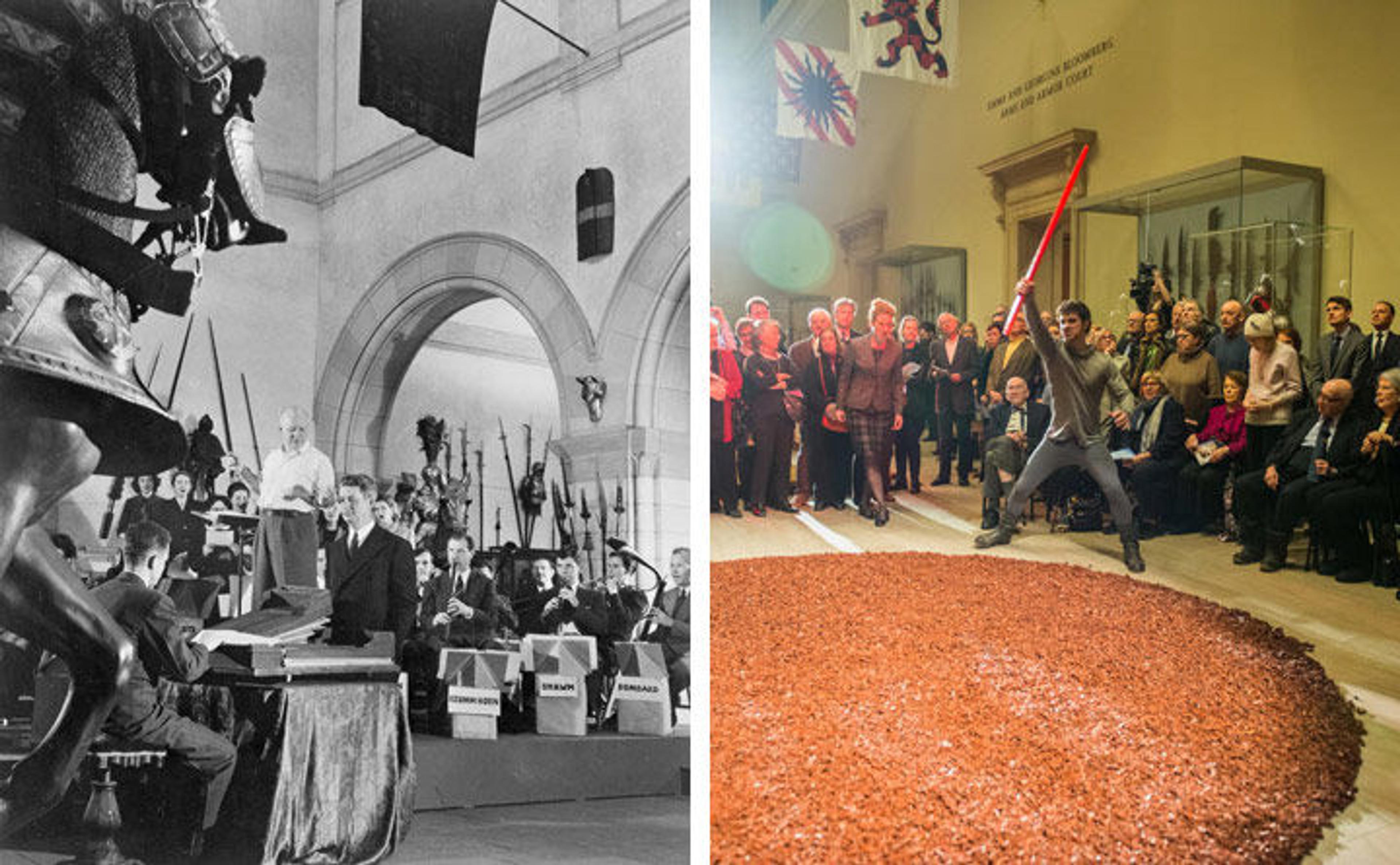
Left: Paul Hindemith and the Yale Collegium Musicum rehearse in the Arms and Armor Court before their concert in May 1948. Photo © The Metropolitan Museum of Art. Right: Il combattimento di Tancredi e Clorinda, performed by Gotham Chamber Opera, February 2014. Photo by Stephanie Berger
The Met's Arms and Armor Court has certainly changed in appearance over the years, but the undeniable allure of these galleries has not. Member concerts were first held in the Arms and Armor Court in 1943 under the direction of then-curator of the Department of Musical Instruments Emanuel Winternitz, who invited esteemed musicians to perform. These concerts were also broadcast, recorded, reviewed, and chronicled by leading publications.
MetLiveArts now stages performances in the Emma and Georgina Bloomberg Arms and Armor Court with less frequency than in the 1940s and early '50s, but when we do choose this gallery for a location, it is because the content and artistic vision of the production are so fully connected and inspired by the collection. This was the case with the 2014 performance of Monteverdi's dramatic warrior opera Il combattimento di Tancredi e Clorinda by Gotham Chamber Opera, which so eerily matched the storyline of Monteverdi's clash of soldiers in battle!
In some other cases, such as choreographer Dai Jian's piece SILENT dialogue in June 2015, dancers moved through the space with powerful contact improv, striking stoic poses that stood out among the powerful collection of armor. Jian selected the gallery not just for its visual appeal, but for the energy and aura of the armor.
The Grace Rainey Rogers Auditorium
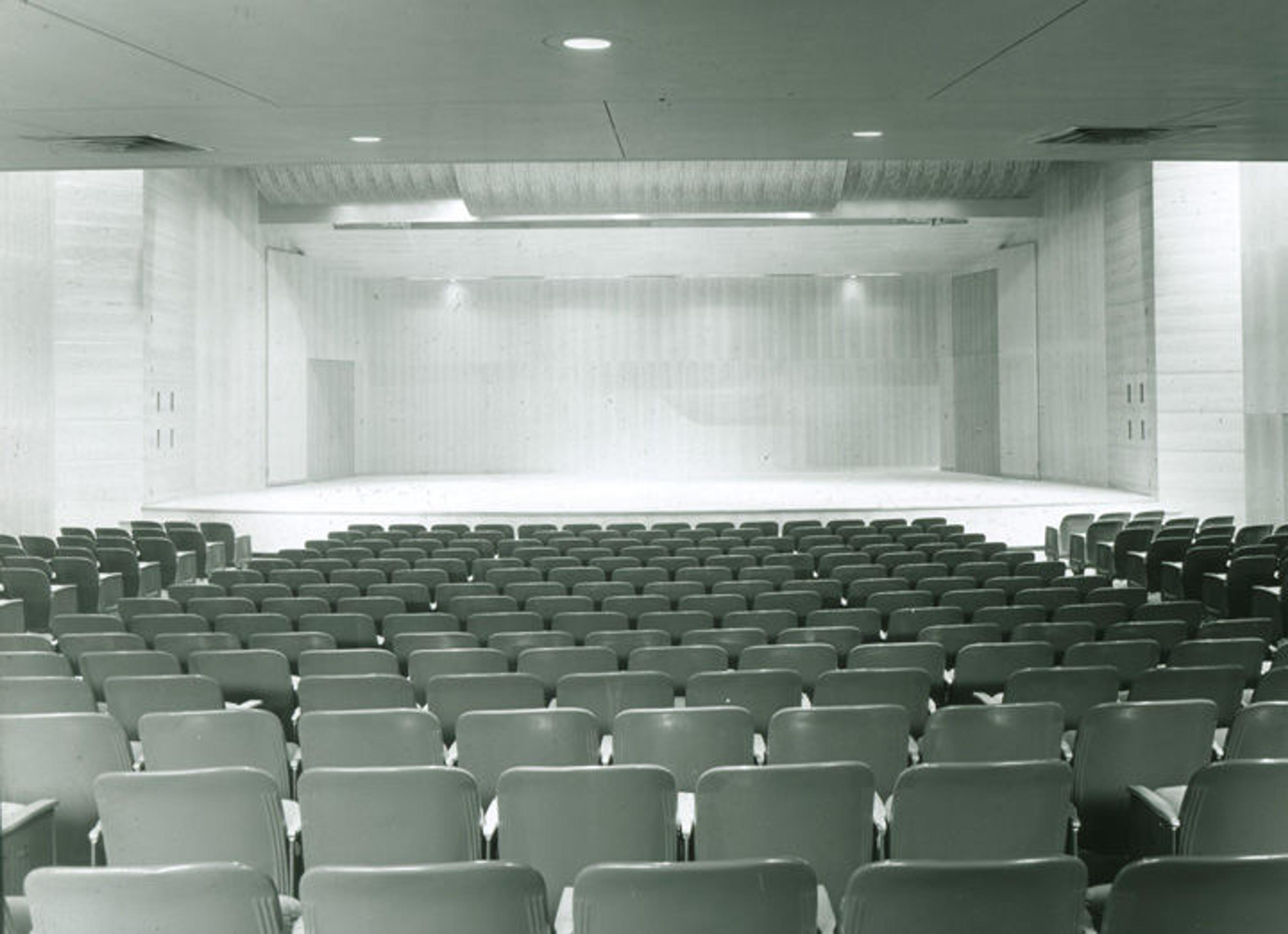
The Grace Rainey Rogers Auditorium, 1954. Photo © The Metropolitan Museum of Art
When the Grace Rainey Rogers Auditorium opened in 1954, it inaugurated a new kind of concert experience at The Met, heralding a subscription series of ticketed performances.
In a New York Times article by Allen Hughes published in 1959 (several years and a few seasons into the new theater), Hughes referenced The Met (Museum) alongside the Met (Opera) as a premier New York City institution for performance, and remarked about the superb concerts offered:
[The Met] is presenting a total of thirty-nine concerts this season, and even more may be forthcoming next year . . . By number of events alone, of course, signify nothing if the quality of the offerings is indifferent. But "indifferent" is about the last adjective one would want to apply to the music made in the sleek, five-year-old Grace Rainey Rogers Auditorium of the Metropolitan Museum.
The first season of Subscription Events for Members, in 1954–55 (the first to take place on the stage of the Grace Rainey Rogers Auditorium), included a subseries of four soloists—Isaac Stern (violinist), Marian Anderson (contralto), Wanda Landowska (harpsichordist), and Arthur Rubinstein (pianist)—in addition to the Budapest String Quartet and a folk song line-up. In seasons to follow, the American Opera Society and the American Chamber Orchestra performed, in addition to a "Young Pianists" series that featured musicians who would become stars and masters of their craft, like Glenn Gould and Leon Fleisher, among others.
Several archival sources note that the Subscription Events for Members series, which would then become Concerts & Lectures, was devoted mostly to chamber music. While the size of the stage is indeed best suited to chamber orchestras and smaller ensembles, MetLiveArts has been pushing the boundaries of what appears onstage at The Met. The U.S. premiere of Wave Movements even took the musicians off the stage and placed them in a pseudo-orchestra pit, while the film by Hiroshi Sugimoto was projected on a large screen on the stage.
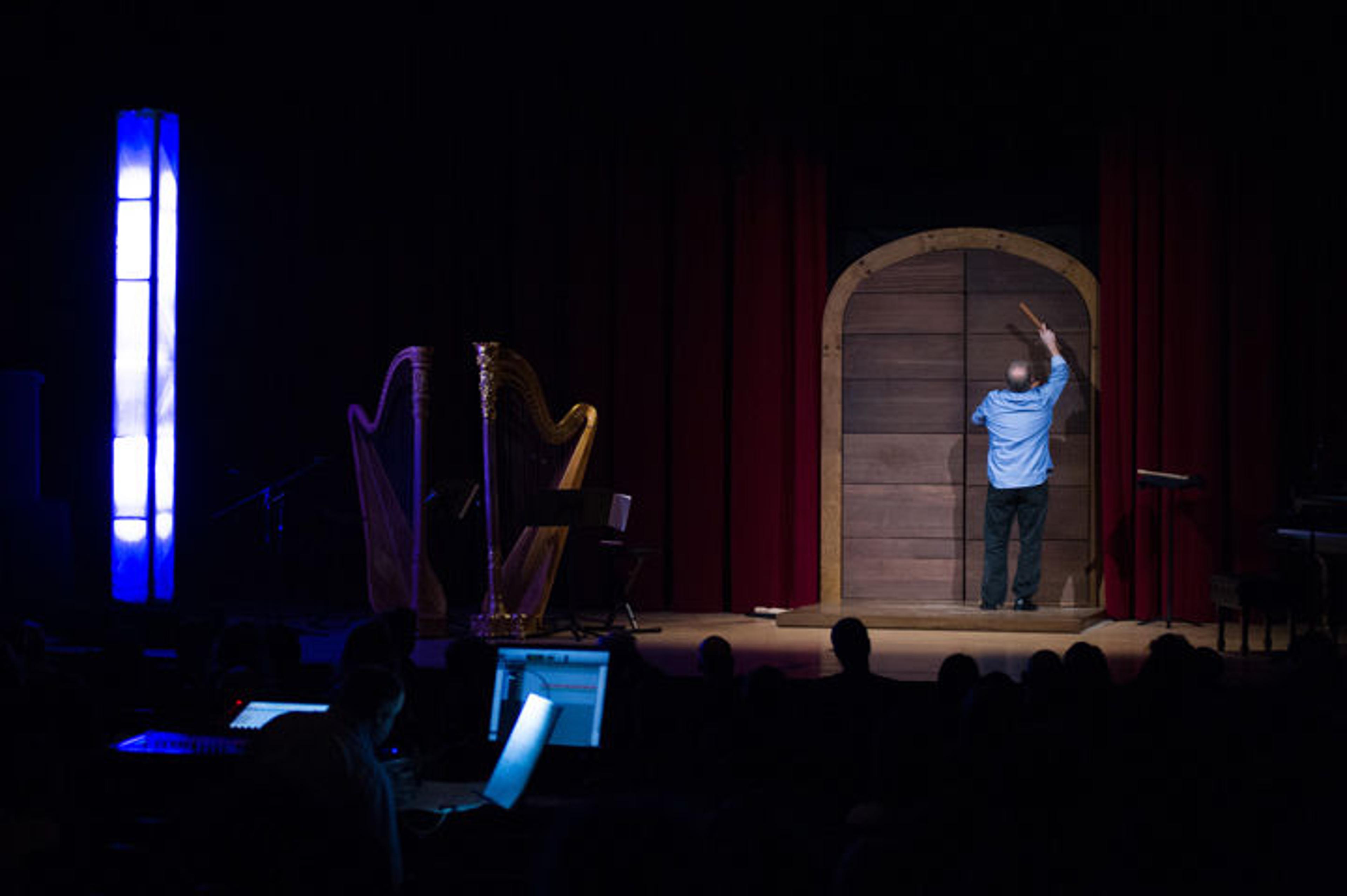
Karlheinz Stockhausen's KLANG, March 2016. Photo by Paula Lobo
In March 2016, Karlheinz Stockhausen's KLANG was performed throughout all three Met locations, but one of the composition's most anticipated parts (which also made its New York premiere with this performance) was "HIMMELS-TÜR"—(Heaven's Door), the 4th Hour—scored for percussionist and little girl, which featured a massive door as the central instrument. The performance of "HIMMELS-TÜR" seemed as far as one could get from a solo harpsichordist or violin recital, but that is something to celebrate: the range of musicians, artistry, and genres that have been featured on that stage.
The Met Cloisters
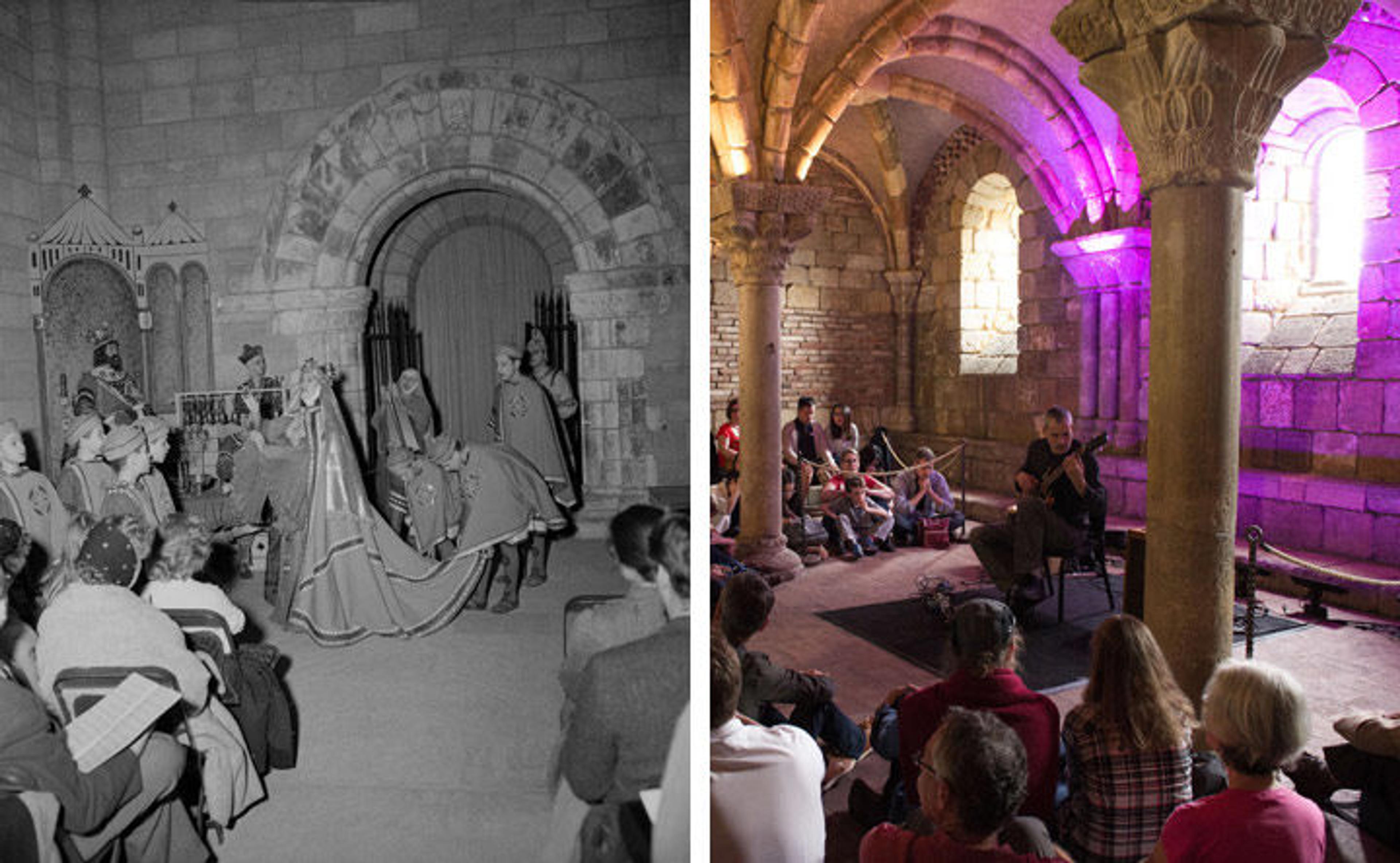
Left: The Play of Daniel, January 1958. Photo © The Metropolitan Museum of Art. Right: Audible Cloisters: Guitar Marathon, May 2016. Photo by Paula Lobo
Over the years there have been many concerts at The Met Cloisters (especially by early-music ensembles), but one that stands out in the repertoire is The Play of Daniel, which was performed in January 1958. According to the original program, these performances at The Met Cloisters would be the first since medieval times in which the entire work was presented in its original dramatic form.
New York Pro Musica performed under the direction of Noah Greenberg, supplemented by a choir of men and boys. The concerts, produced by the legendary Lincoln Kirstein, were a sensation among audiences, critics, and fellow musicians alike. All of New York City celebrated this 12th-century drama staged in a medieval oasis. (It's also fun to note that tickets cost $2 for Members and $2.50 for non-Members.)
In a blog post about the history of performances—dramas in particular—at The Met Cloisters since the early 1940s, Museum Educator Nancy Wu also notes the technical difficulties of the space at the time, making it a challenge to stage performances on a larger scale. Not much has changed since those days. The magic of any concert at The Met Cloisters relies on the ability to embrace these challenges and to invent production plans that work within the restrictions of landmarked galleries and puzzling acoustics.
MetLiveArts has now explored several galleries throughout The Met Cloisters, thanks to the genius and continually inventive work of a full production team. The Fuentidueña Chapel provides the most space for audiences and the most proscenium-like effect, but there are unexpected galleries such as the Langon Chapel, Pontaut Chapter House, and Early Gothic Hall that, when programmed properly with the right instruments and a musician that can command such an intimate space, really provide for breathtaking performances.
The Audible Cloisters: Guitar Marathon in May 2016 was an all-day event that was free with Museum admission, allowing audiences to flock to The Met Cloisters and travel from location to location with serious devotion. With the galleries in mind, each musician activated his or her surroundings and incorporated the rare energy and architecture of the space. We've seen this occur over and over, and it's what keeps the MetLiveArts team inspired: the subtle interplay between environment and music that happens at each performance here.
Related Links
MetLiveArts Blog: Meryl Cates, "The Evolution of Live Arts (Brochures) at the Met" (August 14, 2015)
A Harmonious Ensemble: Musical Instruments at the Metropolitan Museum, 1884–2014, a comprehensive account of the history of the Department of Musical Instruments written by Rebecca Lindsey